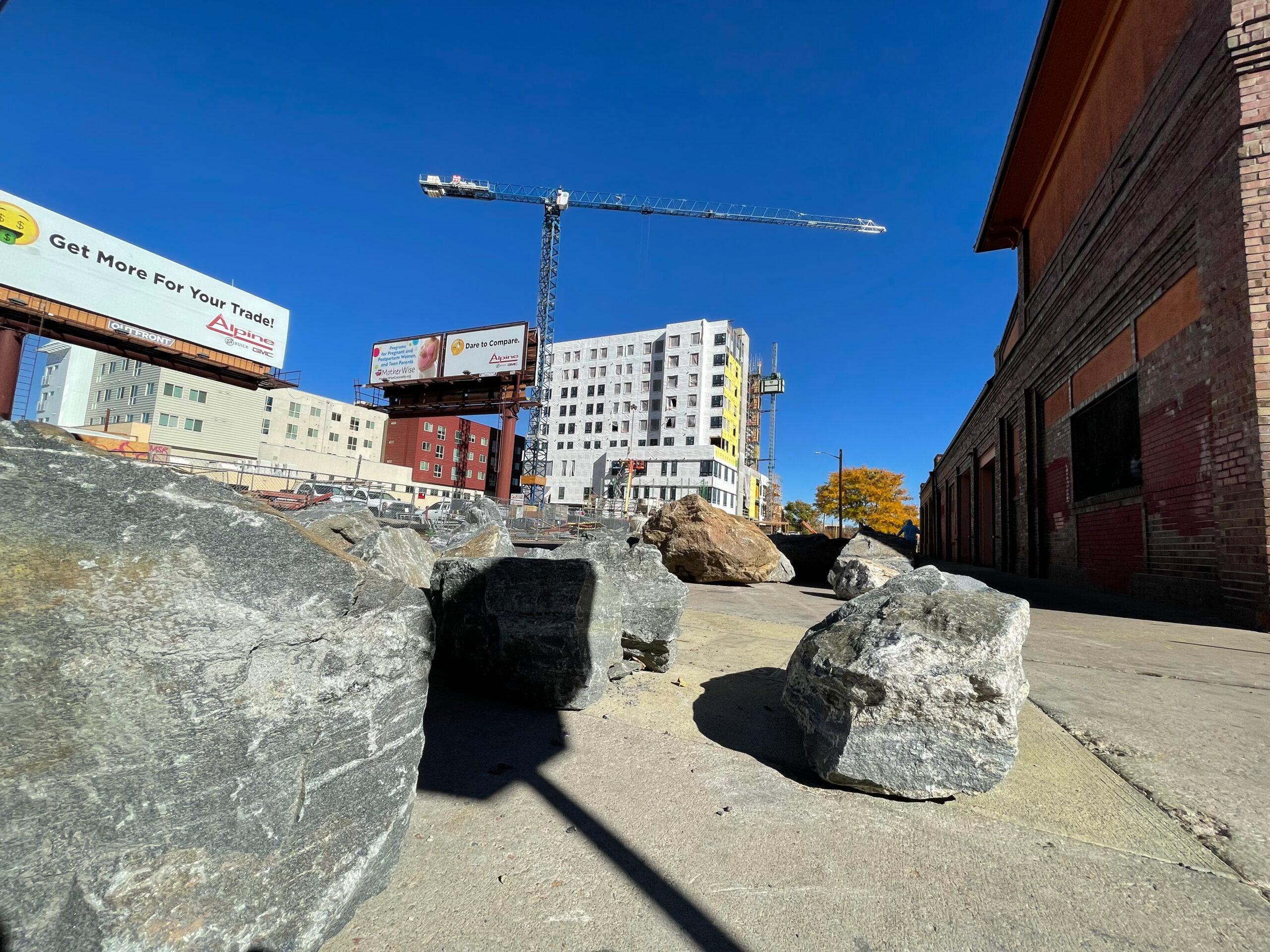Urban Peak's downtown Denver drop-in center, which has been serving youth experiencing homelessness since 1988, is in a part of Five Points where development's booming. Cranes tower above the area as new apartment buildings rise. A phalanx of Lime scooters is parked neatly across the street from the sidewalks outside the brick building, at 21st and Stout streets, which have served -- on-and-off -- as a homeless encampment.
In recent weeks, violence in the area has scared many young people from accessing the nonprofit's services, said Urban Peak executive director Christina Carlson. "We had a number of issues with youth who were reporting being intimidated and not wanting to come in, and also a lot of violence going on outside, where we would have some issues where you were beat up and attacked. And so, it was really rough."

Urban Peak offers life-saving services, she explained, and to do so effectively, the group wants to ensure young people feel safe and can easily find the building. So when the city posted that it would be sweeping the area last week, the nonprofit decided that once the people had been moved, the group would install a long-planned new sign, finish construction on an outdoor patio and revamp the landscaping.
Part of that involved installing metal fencing around the area where people were living. What had up until last week been serving as a home for the unhoused was now a fenced off patch of dirt that looked hostile to anybody considering pitching a tent.
Some homeless advocates were surprised and disturbed when they saw the temporary décor.
"It's not very welcoming," said Benjamin Dunning, Denver Homeless Out Loud lore master, who handles education and media for the advocacy group.
The surrounding blocks are even more visibly hostile to encampments. Nearby sidewalks at 20th and California streets are landscaped with boulders designed to keep people from living on them -- one of many nearby examples of what Dunning describes as "anti-homeless architecture" that has filled the neighborhood.
"If you needed a safe place to go as a homeless youth would this look safe to you?" the organization posted to Twitter alongside a photo of the Urban Peak exterior. "ED Christina Carlson was advised by staff not to fence their clients out but has done it anyway."

So why did she move forward with the fencing?
Installing it will make it easier to put in the new landscaping, Carlton explained, which will likely include picnic areas, benches and natural elements, all designed to create a more inviting space. As for people sleeping on the block, she refused to predict whether another encampment would be built.
"The intention of putting in an outdoor space and doing some landscaping and a sign and all of those things is to create a more welcoming environment -- not to try to keep people out," she said. "All of the intention is like: How do people, when they need help and are in their most vulnerable space, feel like they can come to us safely and come inside safely."













